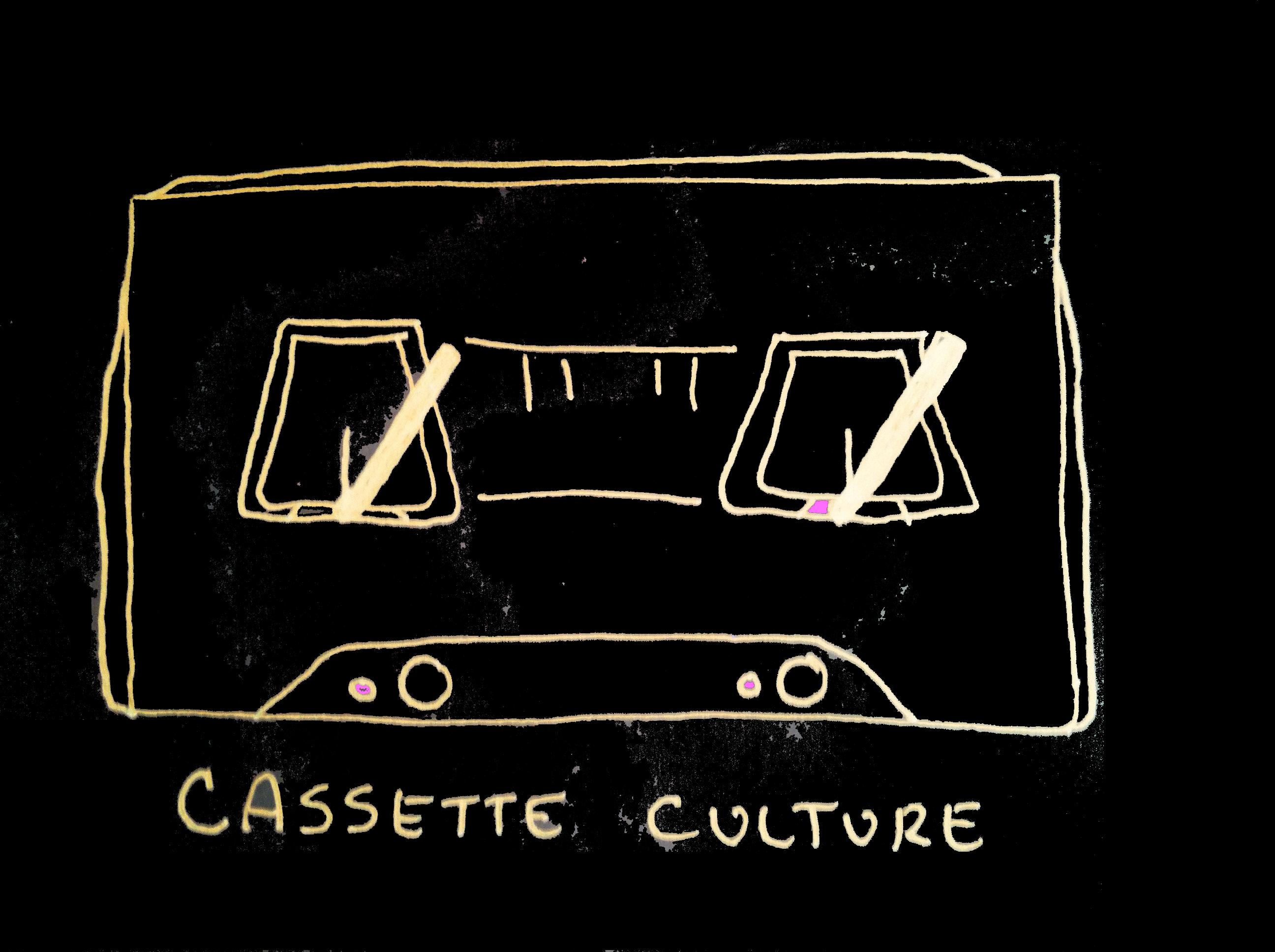Cassette Culture is a monthly column dedicated to exploring the various artists that inhabit the expansive cassette market. Drawing from bands and labels around the world, this column will attempt to highlight some of the best artists and albums from this global community.
 Inkarose
Inkarose
A Love Letter to Water
(Constellation Tatsu)
Colombian-born, Los Angeles-based therapist and musician Alicia Ramírez describes her debut EP A Love Letter to Water as “a love letter to the self.” She took on the moniker of Inkarose for the 4-track release (five if you count the digital only bonus track), and she spends its tenure reveling in a collection of gorgeous ambient cycles and aqueous movements. Featuring field recordings from the Tayrona Jungle in Santa Marta, the rainforest in Kauai, and surrounding soundscapes of Los Angeles and Bogotá, the album examines the restorative properties of water, in whatever form it might take. Throughout these songs, you can feel the collaborative spirit she shared with friends and fellow musicians, as they utilize alto and soprano flutes, alto sax, flute synth, and keys to help her shape this amorphous world of rolling landscapes and clarion countrysides. Throughout, we follow along as water takes on various forms, allowing Ramírez and her musical conspirators to fashion aural representations of these different iterations, showcasing their entwined creativities as they offer a gently unfurling perspective of water as self and life. It’s a wholly comforting and rewarding experience, and one that you’ll want to lose yourself in as often as possible.
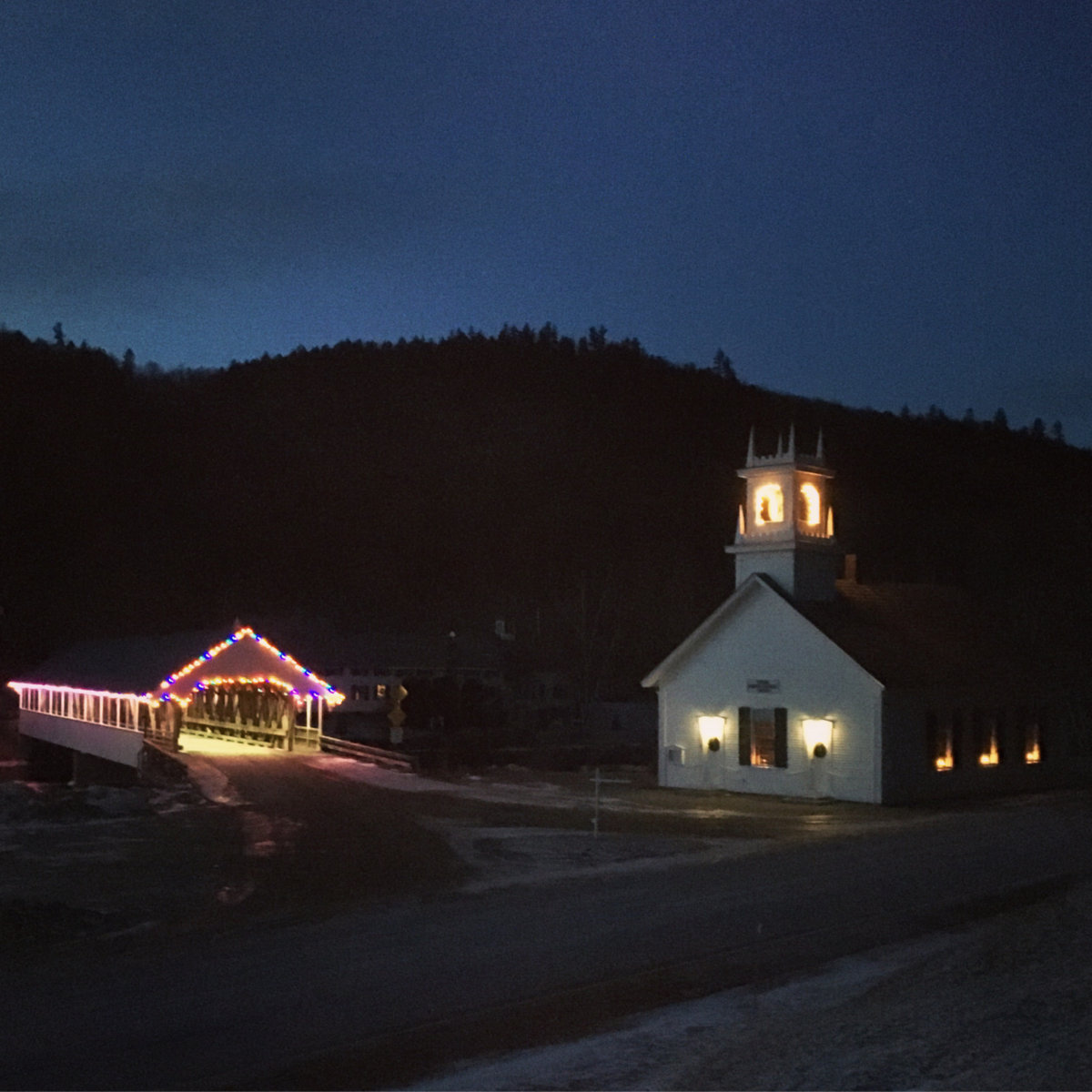 Jason Anderson
Jason Anderson
First Light
(Antiquated Future)
Canadian singer-songwriter Jason Anderson enjoys stepping outside our current timeline, shifting to parallel realities where music trends evolved in totally different ways to our own. For his latest album, First Light, he inhabits a world of Midwest rock and anthemic romanticism, a wide-open expanse where his heart and his head can work out the tangled messes the other has made at various points in his life. These songs speak to the emotional and physical reactions we have when embracing our surroundings, when we stop and take a moment to simply exist in each moment. Between late-night highway stomps, gauzy folk stories, and synth-soaked rock psalms, these tracks exhibit wild streaks of independence and volatility before softening their approach to accommodate a gentler array of sentiment. It can be a whirlwind of sensation at times, as if our brains can’t choose which particular one to focus on. But Anderson never allows a second to be wasted, opting to create a soundscape where his lyrical acumen is only matched by his musical ambitions – imagine Bruce Springsteen fronting M83 and you’ve got a good idea of where he’s coming from and what he hopes to accomplish.
 Fir Cone Children
Fir Cone Children
Today There’s No Tomorrow
(Blackjack Illuminist Records)
One of the musical monikers of Berlin musician Alexander Leonard Donat, Fir Cone Children is the avenue through which he channels a virulent strain of dream-punk freneticism, a sound doused in lo-fi distortion, beset by pummeling rhythms, and expressed through a manic gleefulness. On Today There’s No Tomorrow, his latest collection of punk-ish diatribes, he approaches the world through the eyes of his children adapting their unique perspective to fit the chaos of his cacophonous impulses. Fuzzed-up garage rock tones morph into alt-rock eruptions before post-punk angularities arise and fade from view. Throughout the album, he never loses sight of the underlying melodic associations that make these assorted sounds stick in our heads for days on end. At times disorienting and prone to streaks of emotional volatility, these songs provide instant gratification for those looking for something off the beaten path, a series of raucous revelations handed down by someone lettered in their complex divinities. He’s translated the wonder and openheartedness of childhood into 3-minute blasts of unexpected discovery and drags us along to survey the resulting wreckage.
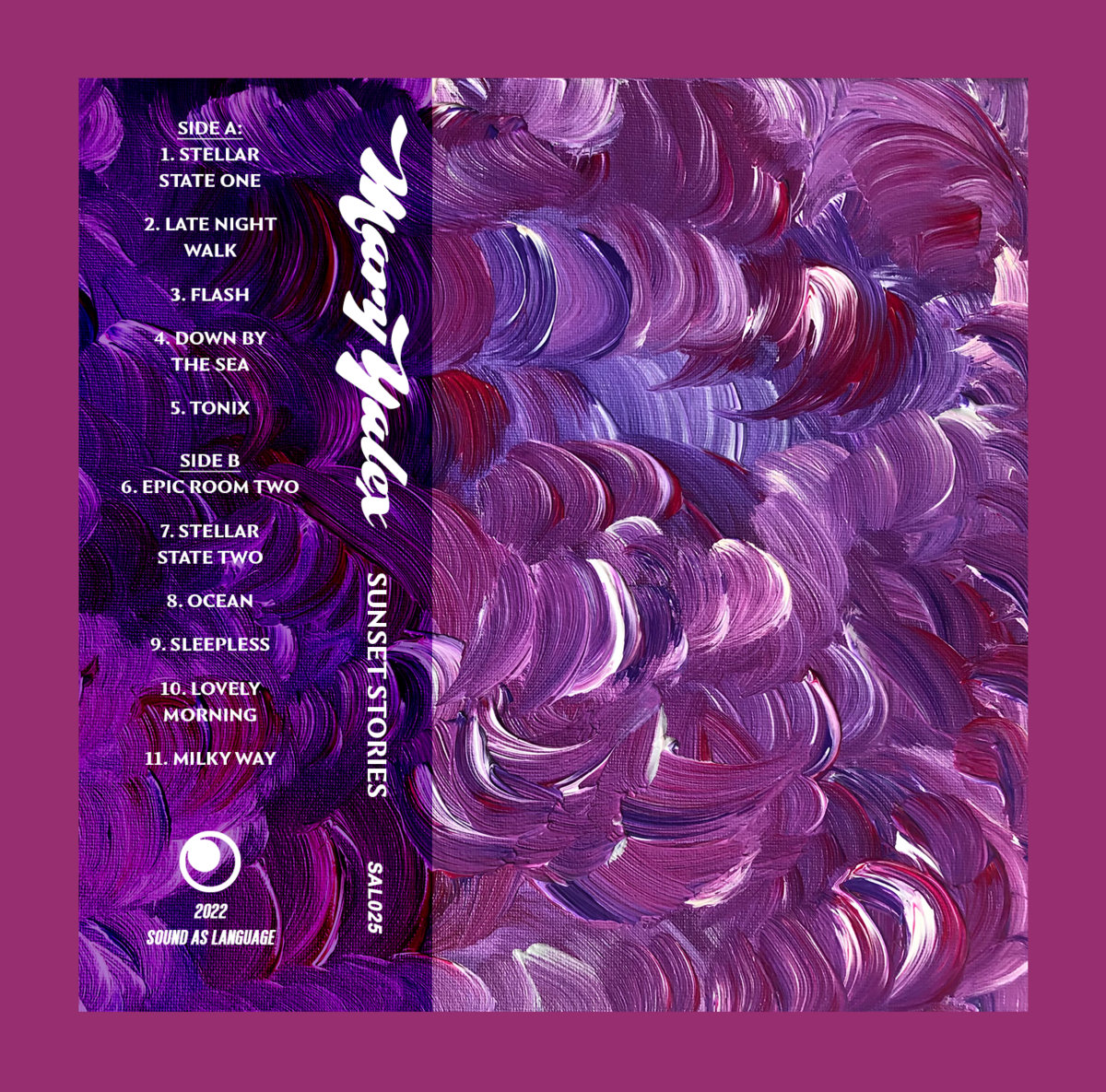 Mary Yalex
Mary Yalex
Sunset Stories
(Sound as Language)
Hailing from Erfurt, Germany – but residing in Leipzig for over a decade now – electronic artist Mary Yalex specializes in the formation of ambient landscapes that ripple with the faint echoes of techno and dance music. Her love for these sounds goes back to a youthful obsession with Warp Records, a label that brought artists like Autechre, !!!, Squarepusher, and Red Snapper a larger audience within experimental music’s sphere of influence. She’s always sought to find the human in the synthetic, to discover new ways to facilitate the connection between organic and inorganic things. And on Sunset Stories, her latest album of gorgeously manicured circuital marvels, she outlines these environmental soundscapes with the finesse of someone who’s been doing this all their life. The synths shiver and wobble but never feel lightweight; there’s a certain heady discourse here, one that favors internal reassessment and adaptation rather than overt deconstruction. She blends the various hues of her inspirations into a sound both articulate and vague, propulsive and measured, a beautiful realization of contrasting feelings that has allowed her to create a record that revels in its ability to captivate and eventually evolve into a miraculous ambient singularity.
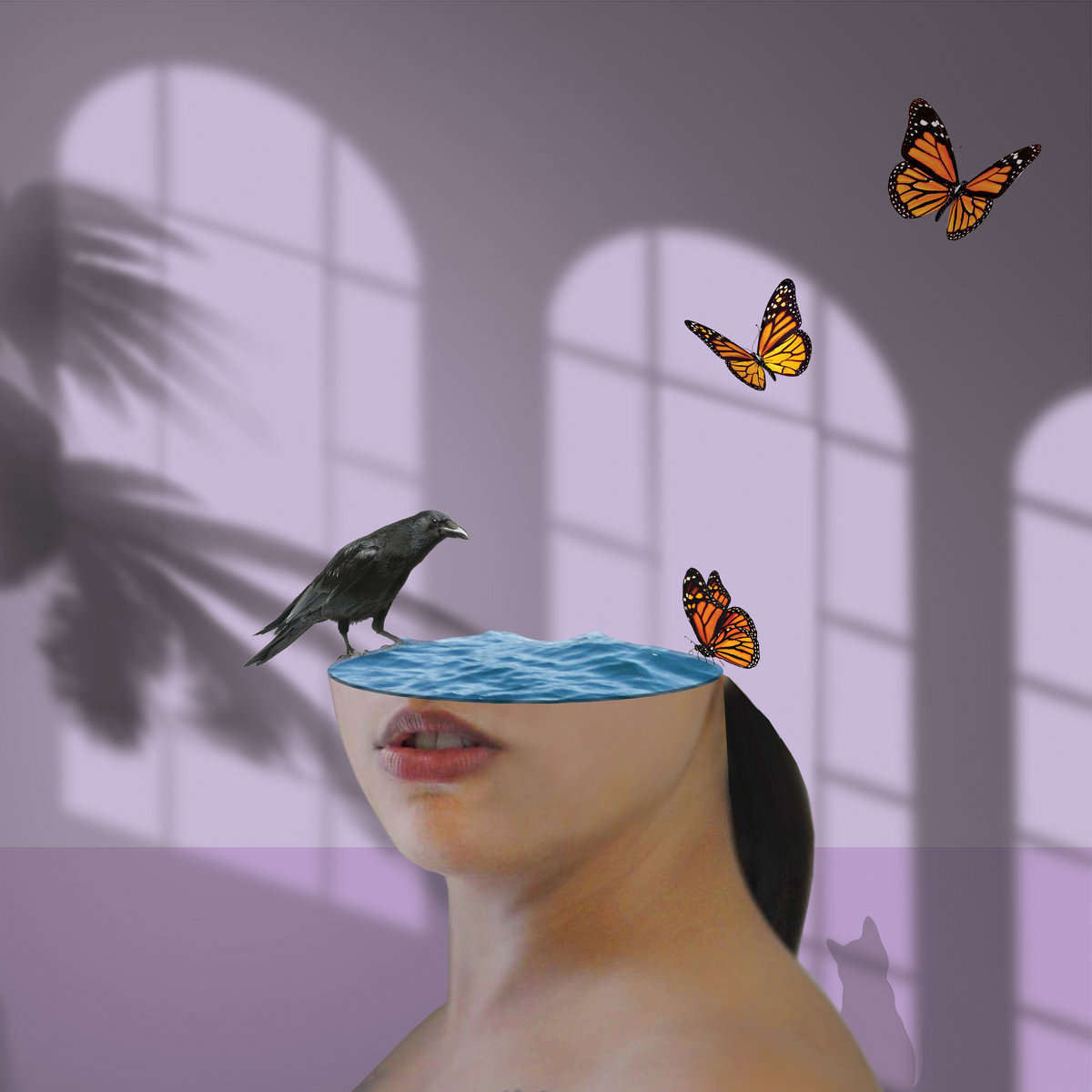 Lys Scott
Lys Scott
squashed dreams & broken wings
(Crafted Sounds)
Originally self-released in 2021, squashed dreams & broken wings, the debut record from Pittsburgh rapper Lys Scott, is finally getting the label treatment via Crafted Sounds. Filled with ingenious beats lounging in avant-rap landscapes, the album is awash in stories spiked with braggadocio, moments of self-discovery, and a need to transcend social constraints. As a queer Thai rapper, their music is inclusive yet never relies on broad platitudes when searching for meaning in the tumbling excesses of the world around them. In the same way that Leikeli47 and Young M.A. don’t affix specific labels to themselves or their music, Scott finds a way to rise above lazy characterizations to find honesty and fearlessness in their own skin, regardless of anything else. Both an insightful examination on how the past shapes and influences the future and a way for Scott to sculpt a fascinating hip-hop nostalgia into something acutely modern, this record speaks to how we find meaning and define ourselves by the experiences we’ve taken into our hearts, willingly or not. A stunner of a statement of intent, squashed dreams & broken wings is a complex and wildly adaptive treatise from someone whose voice is just beginning to rise.
 Shinra Knives
Shinra Knives
You Will Never See Heaven
(Already Dead Tapes & Records)
Formerly known as Parisian, St. Louis producer Ian Jones now finds himself creating hip-hop-soaked electronic music as Shinra Knives, building glitchy, IDM manifestos that seem to shake the ground under your feet. For his latest batch of instrumental chaos, Jones has supplied us with You Will Never See Heaven, a 14-track thesis on the permeability of music as vehicle for emotional expression. These songs thump and send shockwaves up your spine, veering between hyper-pop euphoria and beat-tape capriciousness. But even within the confines of these volatile genres, he pushes each to their limits, redefining the boundaries of these sounds and finding exhilarating new ways to further develop their own unique personalities. It can be surprising, listening to the album, how intense these experiments get, with Jones digging into some truly raw and unrelenting sonic landscapes. But what ultimately shines through in these tracks is the humanity at the core of his circuital creativity, the sparks of compassion, joy, and heartache which fuel these labyrinthine compositions and our subsequent response to their frenzied gravities.
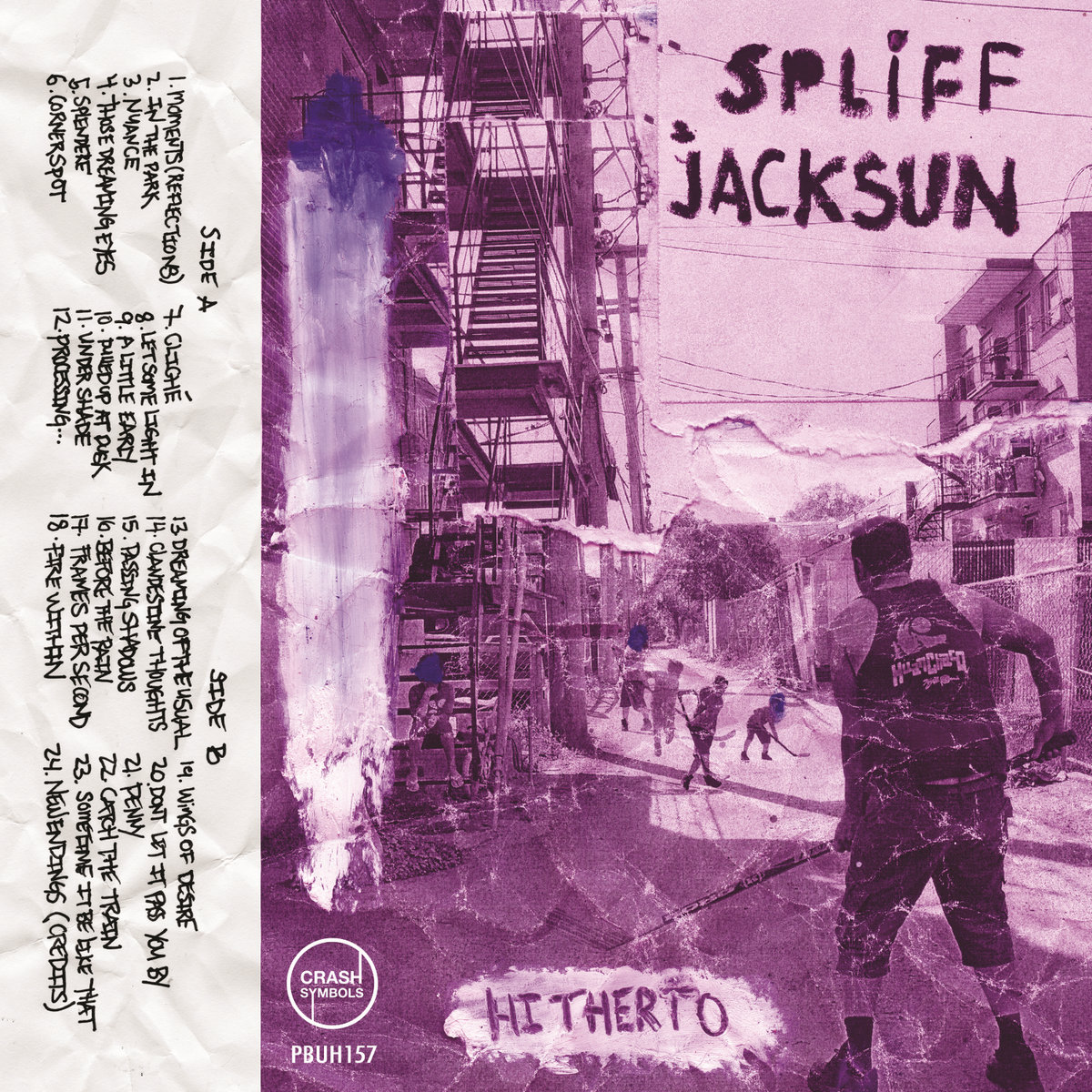 Spliff Jacksun
Spliff Jacksun
Hitherto
(Crash Symbols)
Across the length of Hitherto, Montreal musician Spliff Jacksun‘s latest collection of beats, ambient landscapes, psychedelic visions, and noir-jazz, he shapes an homage to Canada’s “second city” that effortlessly shifts between genres and delves into his memories and experiences roaming its expanse. There’s a certain repetition here that works in his favor, a cyclical look at how these sounds invade and influence our perspective, even if done without our knowledge, passively and thoroughly illuminating. There’s a sense of laidback motivation – not that it’s directionless – but it finds no great need to hurry along its path. Each track feels like an aural snapshot of a moment frozen in time: passing under streetlights on a winter evening, watching our reflection as we stroll past a row of windows, seeing the rain fall in sheets over the Saint Lawrence River. At times gentle, clattering, and expansive, these sonic photos bring us closer in our understanding of how Jacksun sees and reacts to this place. Much like chapters in a book, these tracks lead us through a narrative focused on his emotional associations, and we soon begin to see the wonder reflected in his own musical ramblings.
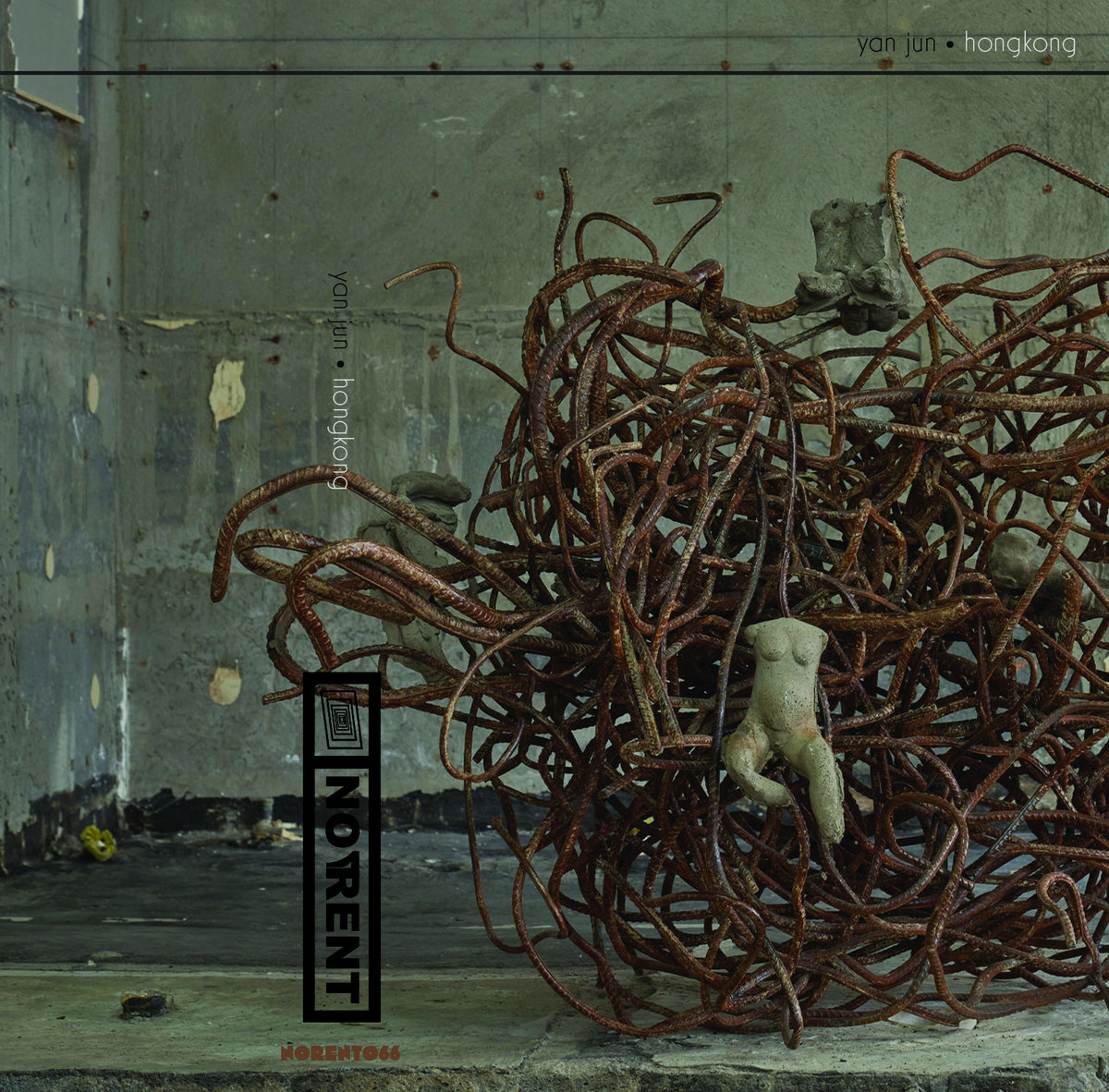 Yan Jun
Yan Jun
hongkong
(No Rent Records)
Beijing musician and poet Yan Jun uses noise as a way to channel experience and inexpressible emotion into a staticky, hissing miasma of tone and texture. And on hongkong, his latest collection of indescribable and often dissonant sounds – the ending of a trilogy featuring europe and Lanzhou – he goes far beyond avant-garde aesthetics, approaching a non-music style that is equal parts arrhythmic cacophony and limitless field recording manipulation. To witness his work is to find yourself immersed in a world of free-roaming discord and capricious inspiration, and hongkong may be his most refined statement on this concept of noisy assemblage. There’s a beautiful austerity here, a perspective on sound that deals in severe extremes and obscure interpretations. Like his past releases, each track on this album is a blank canvas on which we project our own emotional crises and contentment, lending depth and nuance to these harsh landscapes. Alternately beguiling and jarring in its offerings, it’s a challenging listen that asks us to be more than passive observers. It demands our attention and requires a substantial emotional collaboration before beginning to loosen its hold on its secrets.
 Andy Fosberry
Andy Fosberry
Easter Killing
(Third Kind Records)
Released in 2021, Easter Killing is a film wherein a group of friends are stalked and hunted down by a killer in a bunny mask. For his score to this slasher flick, Andy Fosberry relied exclusively on synths, working with foreboding drones, reverb-doused pads, and clanging percussive sounds to provide a hypnotic backdrop to the violent events onscreen. But these songs are more than just static mood-setting pieces, they evolve as the film progresses, telling a parallel story of shifting atmospheres and creeping dread. As you get further into its depths, you begin to see how the synths take on different appearances: strings one moment and martial percussion the next before morphing into a more subdued vision of brass. Fosberry has a unique understanding of how to use synths in service to a larger musical palette, to expand their accepted boundaries and find new ways of drawing out sound from their vast rhythmic possibilities. This soundtrack provides crucial context and heightens each scene that makes use of its boundless innovation, revealing the true nature of both the instruments and the story playing out in front of our eyes.
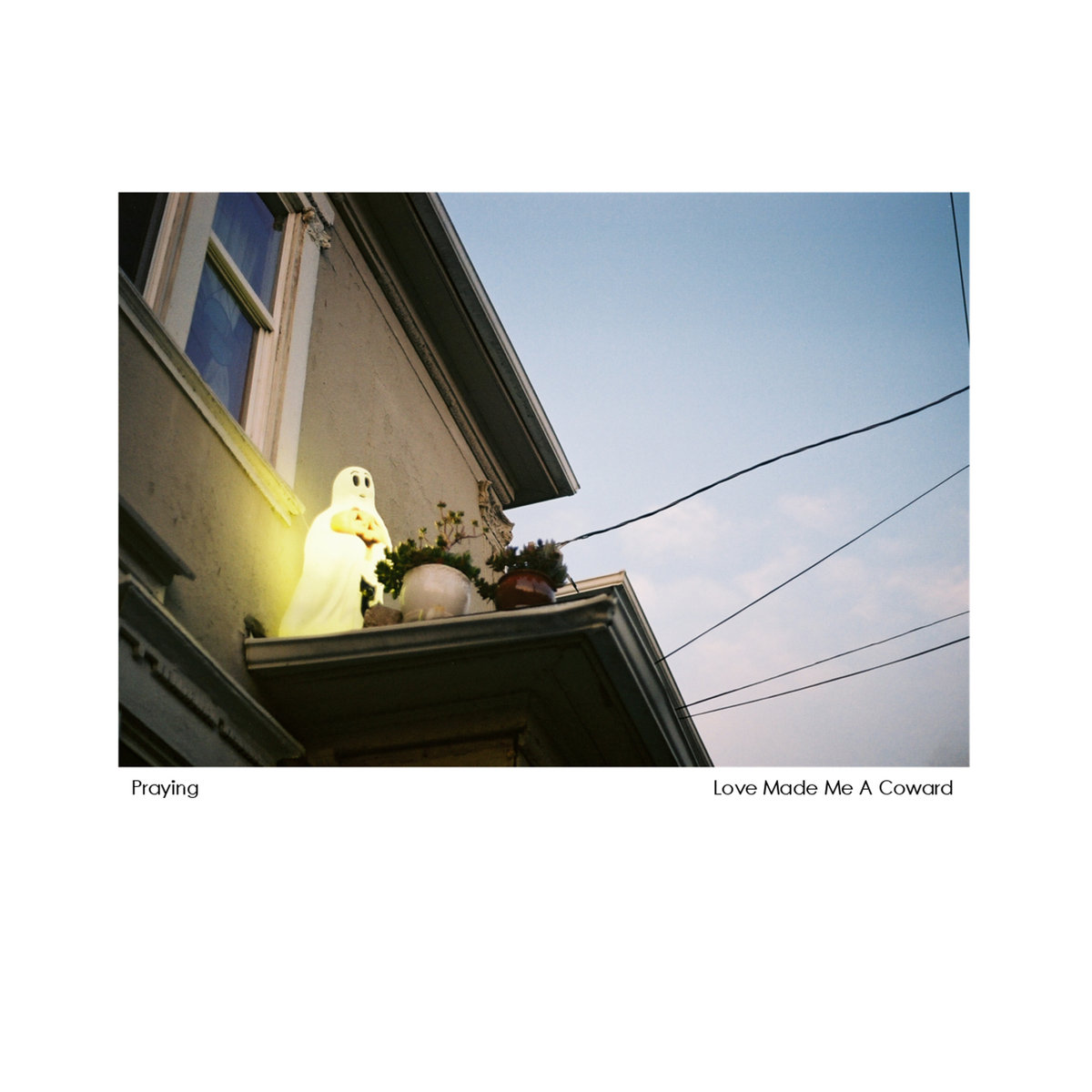 Praying
Praying
Love Made Me a Coward
(Drongo Tapes)
Oakland post-rock outfit Praying create extended sonic explosions, the kind that ripple out from your speakers in definable waves, consuming everything in their path. It can be sludgy, doom-laden, but also melodically rich, a perfect storm of chaos and catchiness. On their latest release, the 4-track Love Made Me a Coward, the band stomps and shakes their fists at the world around them, an emphatic expression of angst, anger, and heartache. Masters of both a calm fury and anarchic rage, they offer expansive soundscapes where emotion becomes tangible, where you can confront and grapple with the realities of your own experiences. These songs balance a fierce bluster with introspective impulses, finding solace in both the miasmic whirl of capricious emotion and the vagaries of the band’s own memories. Despite the intricate nature of these sounds, the band fosters an atmosphere of personal interpretation, a space where anyone can lay their own complicated headspace against the music and come away with revelation and a desire to dig deeper into their own subconscious. It’s a dense and thrilling record, and one that’ll keep you occupied for a very long time.
 Tobari Daisuke
Tobari Daisuke
ギター
(Eye Vybe Records)
Originally released in 1999, Tobari Daisuke’s ギター is an oddly alluring set of avant-folk wonders and lo-fi sonic sketches. Listening to these songs is like watching scraps of someone else’s memories flash through your mind – they’re impressionistic and without many definable boundaries. The fact that not much is known about Daisuke only adds further to the mysterious aura surrounding them. Stark and stripped of anything unnecessary, these tracks exist in only the vaguest terms; you can hear them and experience the music, but no appreciable context is available, so they remain a ghostly presence even when approached directly. And that ethereal spirit is one of the reasons why they’re able to burrow down so deeply into your subconscious. It’s hard to even know how to engage properly with them, as their restless personalities keep them flitting from one moment to the next without a discernible purpose. But if you’re able to give yourself over to Daisuke’s unpredictable genius, you’ll find an album of relentless creativity and a desire to shatter genre expectations, a collection of spectral folk songs just waiting to settle into the deepest recesses of your brain.
 Sam Parkin
Sam Parkin
With Friends
(Den Tapes)
Seattle musician Sam Parkin dabbles in the same kind of psych-inflected indie-folk as bands like Grizzly Bear and Fleet Foxes. His music is not particularly forceful, though it does possess its own internal sense of momentum and a feeling of quietly expanding energy. On his latest collection, With Friends, for Den Tapes, he combines 4 new tracks with a reissue of his 2019 self-titled EP, creating a purposeful bridge between the past and the future. And while he hasn’t made any dramatic shifts in his sound from those earlier recordings, the new songs reveal that he’s found a way to evolve and refine the gauzy folk stylings he so obviously adores. Parkin displays a rare talent for finding meaning in recognizable sounds and sentiment, a way to explore his inspirations without being weighed down by them. It’s what he does with the small things, such as the sax on “You See the Same Thing” and “Who’s to Say”, that really speaks to his understanding of folk (and folk-pop) structures. In someone else’s hands, there would be an over reliance on nostalgia and aural familiarity, but Parkin knows when to rely on influence and when to push against genre convention – and as the title implies, he does all this with a little help from his friends.
 Greg Freeman
Greg Freeman
I Looked Out
(Bud Tapes)
The work of Vermont singer-songwriter Greg Freeman is filled with Old Testament devastations, splintered heartache, and the shivering echo of the Green Mountains. Recalling the dire folk warnings of Bonnie Prince Billy and the timeless Laurel Canyon rock vibes of Neil Young, his debut album, I Looked Out, is an occasionally raucous and often country-tinged collection of cautionary tales and archaic parables, a record that wears it influences proudly before shredding them to pieces. There are wailing sheets of guitar that develop an equilibrium with horns, strings, and the odd bit of tape manipulation, a proper amalgam of tonal experiments which highlight Freeman’s extensive history with these sounds. As each song unfurls, you begin to imagine open highways and twisting mountainous routes, an urge to go somewhere, anywhere, to become the lead voice in your own life. These songs work as chapters, as vignettes, of a larger compendium of history, of which we are just a small part. I Looked Out is about finding the role you are meant to play and the consequences of that decision to explore the insistent beating inside your chest.
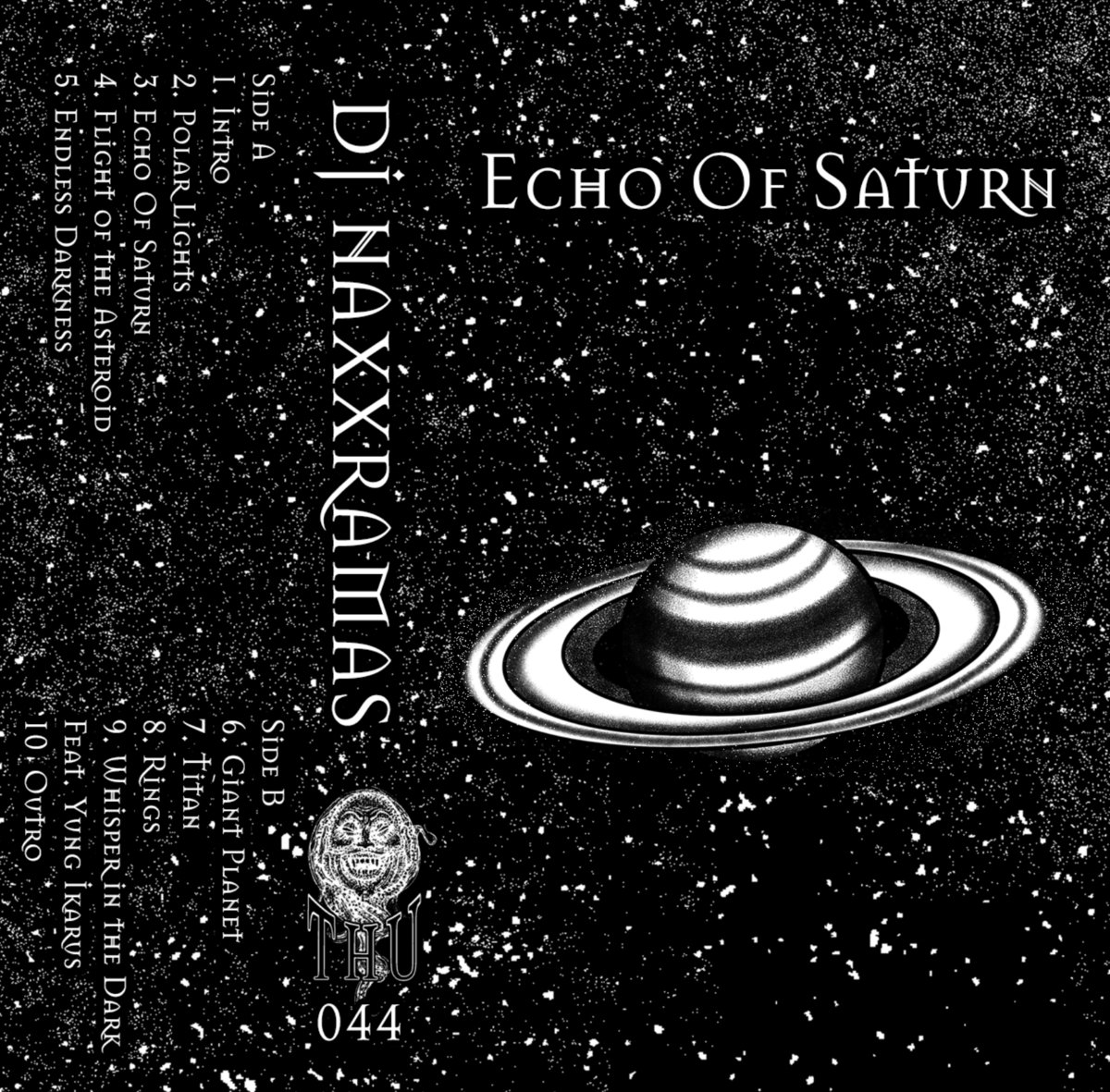 DJ NAXXRAMAS
DJ NAXXRAMAS
ECHO OF SATURN
(Tape House USA)
When you blend the rhythms of Memphis hip-hop with the moody atmospheres of Norwegian black metal, you get an odd concoction colloquially known as dungeon rap, a genre bult around samples of foreboding dungeon synth music and stark beats. DJ NAXXRAMAS finds himself fully immersed in this sound, a wandering specter among the shadows and wobbly melodic movements. On ECHO OF SATURN, he ventures into the celestial arena, casting out spacious synths and blocky percussion in an effort to reach the furthest corners of the galaxy. Rather than concrete narratives, these tracks swirl and spin around like disoriented stars, losing all track of time and location as they offer their otherworldly perspective on space and the infinite wonders therein. The synths are mercurial, liquid rhythms that cascade around the austere drumlines, floating off into some distant ether once they’ve exhausted their mystery. This sound may still be relatively niche in popularity, but albums like ECHO OF SATURN should provide novices with a hypnotic entry point into this fascinating sonic expanse.
 Dane Law
Dane Law
blue forty-six
(Blue Tapes)
When he’s not giving lectures in Sound Design at London South Bank University, Adam Parkinson is recording tonal experiments as Dane Law, the moniker under which he explores various abrasive rhythms, neo-classical arrangements, and digitized folk melodies. On blue forty-six, his latest series of investigational excursions, he focuses in on the sound of a plucked acoustic guitar, sampling individual notes and then creating a dizzying latticework of sound through his computer. At times, the results mimic the clarity of a harp or koto, but the underlying resonance remains that of the ubiquitous instrument, layered in ways that would likely prove impossible for any person to physically play but which engulfs its audience through a sort of mesmeric rhythmic abstraction. “During lockdown I become obsessed with literature about polar exploration,” Parkinson explains, “and spent a lot of time at home with my mind wandering off to arctic wildernesses … the album is a sort of accompaniment to these flights of imagination.” The twinkling and occasionally Baroque notes certainly conjure images of vast frozen landscapes but also allows other interpretations to be discovered through its crystalline minimalism and digital manipulations.
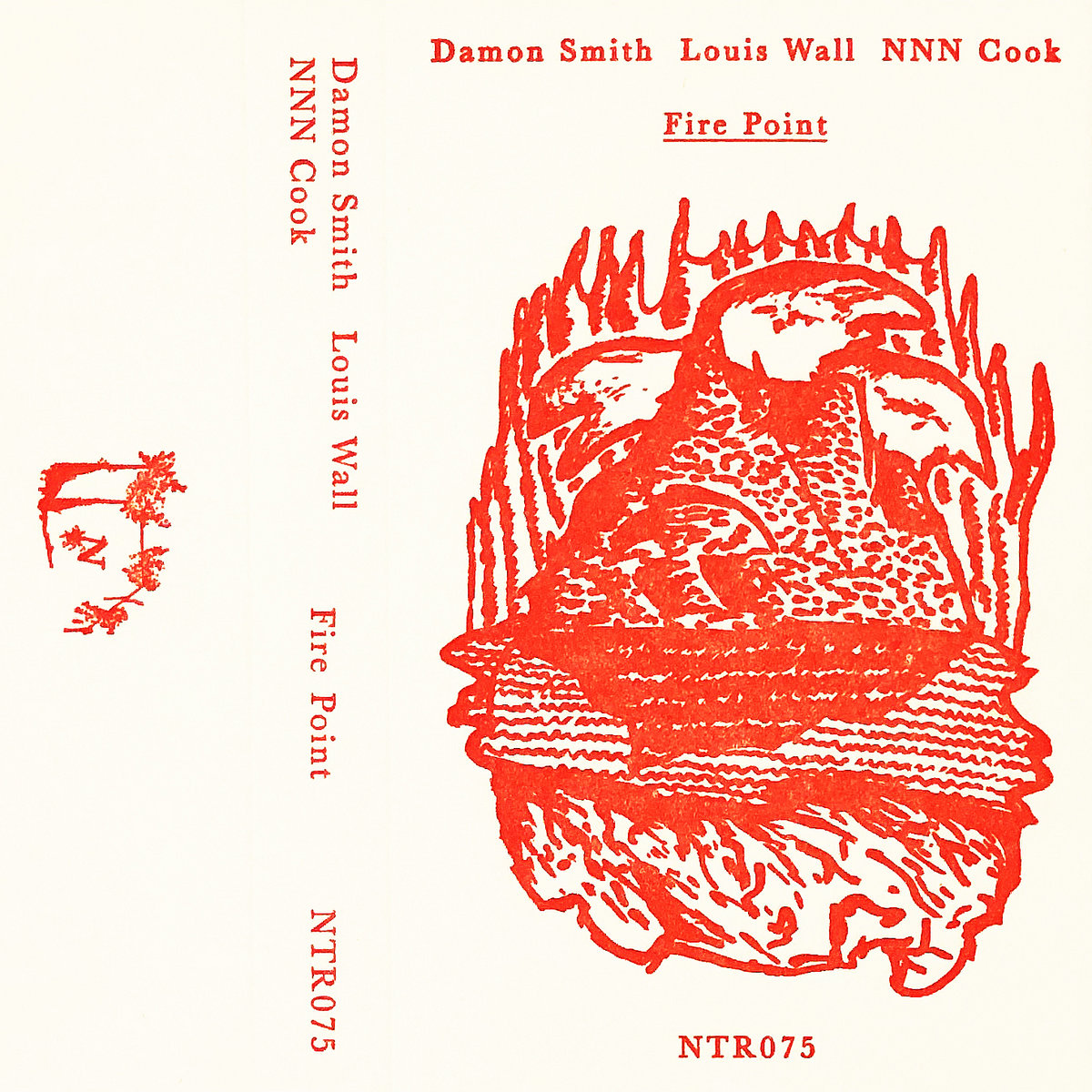 Damon Smith / Louis Wall / NNN Cook
Damon Smith / Louis Wall / NNN Cook
Fire Point
(Notice Recordings)
For most of Fire Point, the new album from Damon Smith, Louis Wall, and NNN Cook, you feel as though you’re chasing some enigmatic answer, some elusive purpose hidden among the experimental textures and atonal modulations. Fragments of double bass, cello, various electronics, synths, flute, saxophone, and unidentified field recordings blur into a cacophonous smear of impressionistic soundscapes that beckon toward undiscovered realities. Nothing seems content to rest; everything moves at right angles to its environment. But the wonder of these recordings is in how these musicians make all this clatter and storming noise into a place of agitated reflection, a shifting landscape of indeterminate possibilities and wildly volatile musical associations. There’s a welcome freeness in the artists’ resolve to completely deconstruct concepts of rhythm and melody, in their desire to merge these sounds regardless of origin or sonic convention. Fire Point is a study in the art of musical collage, of reconstruction, and of uninhibited rhythmic complexity.
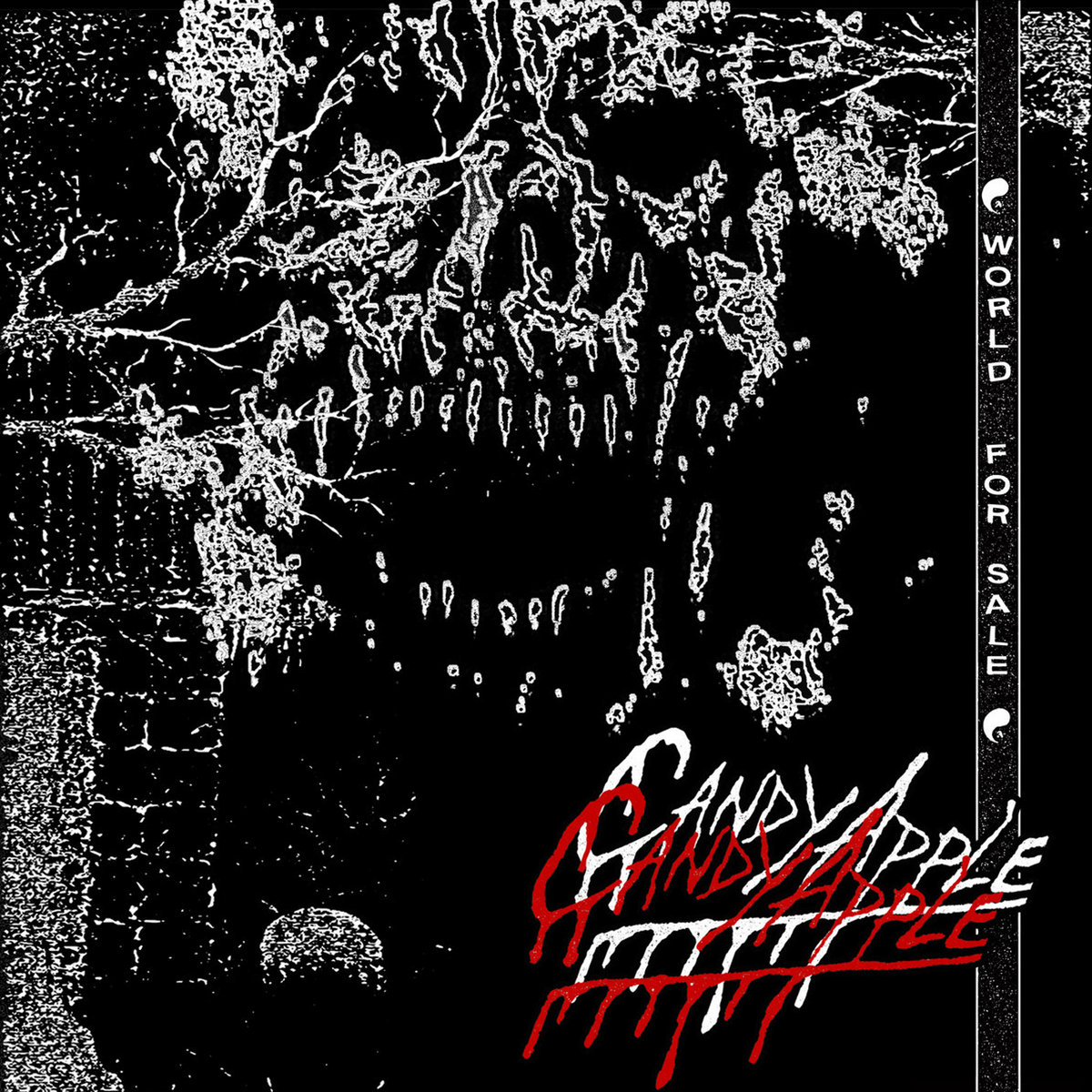 Candy Apple
Candy Apple
World for Sale
(Smoking Room)
Denver hardcore punks Candy Apple bring an old-school fury to their new 4-track EP, World for Sale. Driven by cavernous riffs, jackhammer percussion, and howling vocals, the album recalls the grimy, lo-fi tectonic shifts found in much of the work of hardcore bands of the ‘80s. But there’s more here than just an allegiance to anarchic musical antecedents; the band infuses their punk-metal with a blown-out aesthetic that matches chaos to catchiness. These songs trudge and ooze, laying waste to the surrounding landscape through intense waves of distortion and geological tremors. There’s something primal at work on World for Sale, a sense of drawing forth sound from the vast inner reaches of the earth, or maybe some distant world yet to be discovered. Built upon a roar both terrestrial and otherworldly, the album is a vicious and compelling treatise on hardcore punk’s continued validity. Even more than that, though, it liberates this noise from any genre limits and obliterates any expectations we might have had concerning the unstable intersection of metal and punk.
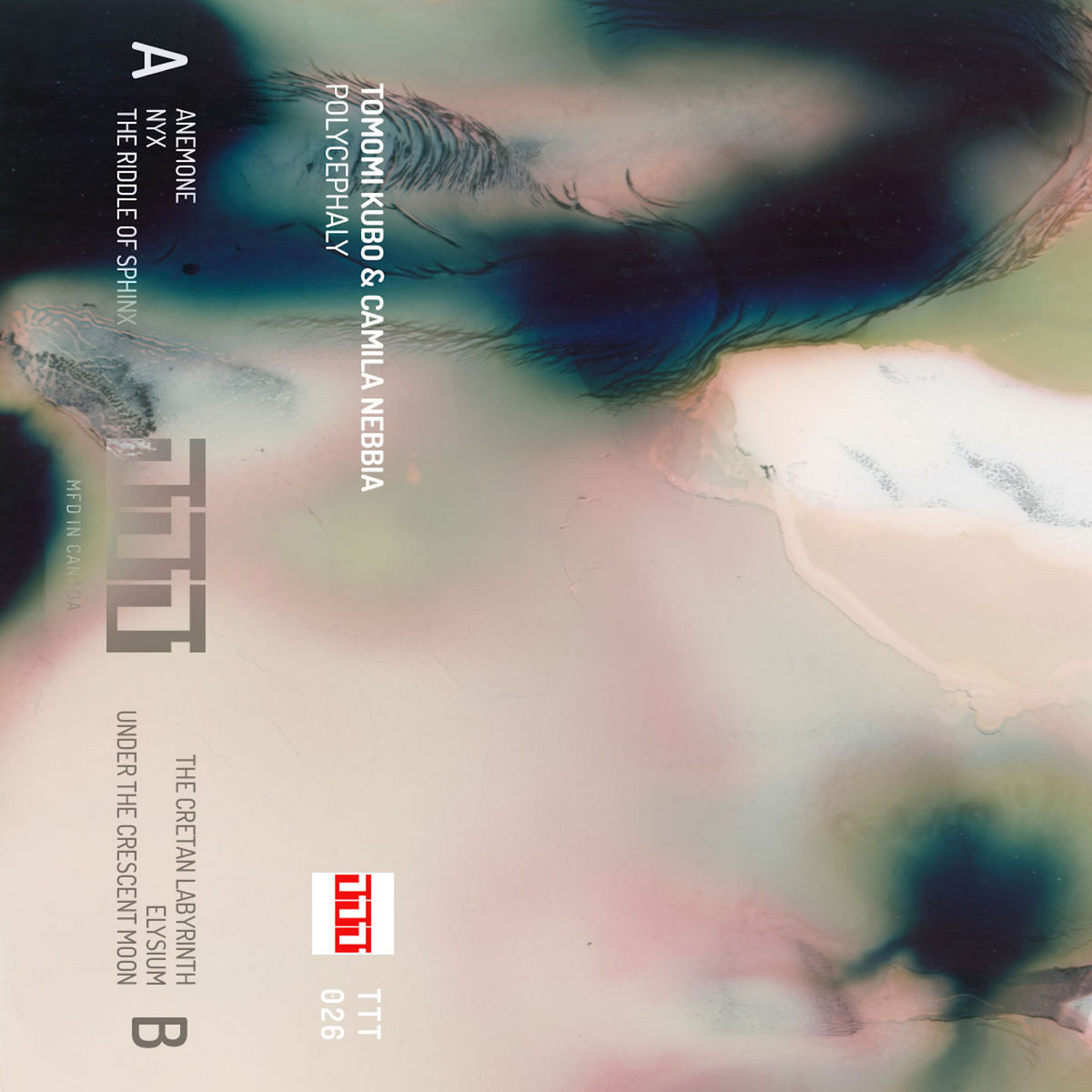 Tomomi Kubo / Camila Nebbia
Tomomi Kubo / Camila Nebbia
Polycephaly
(Tripticks Tapes)
You would never guess that the first time Tomomi Kubo and Camila Nebbia ever met was when they began recording together in Kubo’s Barcelona studio, but that is exactly what happened. They allowed the sounds of their chosen instruments – Ondes Martenot for Kubo and saxophone for Nebbia – to act as their introductions to one another. The result of those sessions comes in the form of Polycephaly, a collection of improvised pieces which adhere to shared ideas of collaboration and foundational development. From the theremin-esque sounds of the Ondes Martenot to the skronking saxophone eruptions, these songs are love letters to shared musical affections, to the joys of pure inspiration. The musicians align in their experimental tendencies, drawing out jarring contrasts and fluid entanglements that highlight the possibilities of joining these two instruments. At times ethereal and ghostlike, Kubo’s shivering rhythms flow like liquid silver before being spiked with the noirish atmospheres birthed by Nebbia’s plaintive performance. The album possesses a beautifully curated balance of nuanced entrances and dramatic exits, allowing both artists to thoroughly inhabit and explore this world of spontaneous musical architecture.
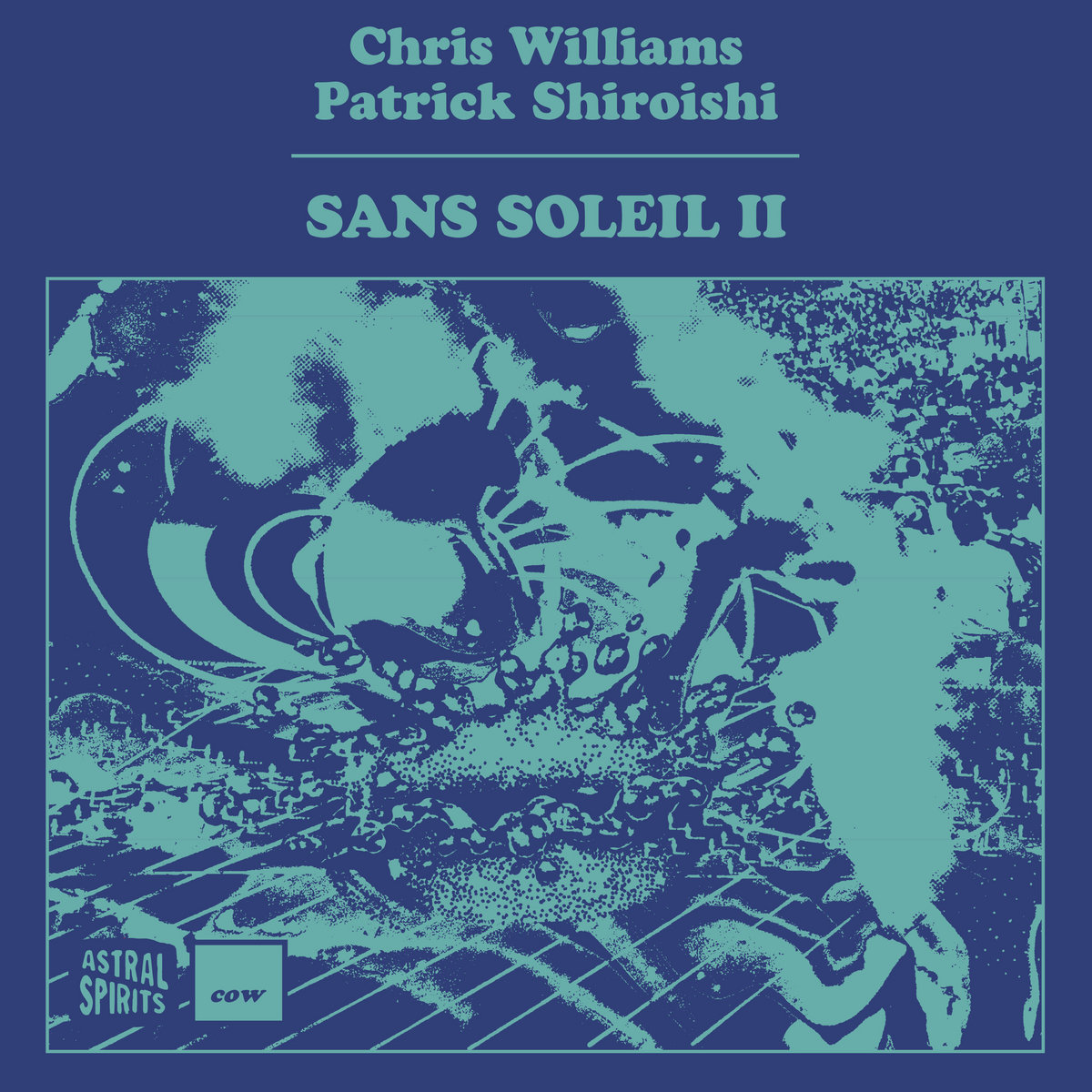 Chris Williams / Patrick Shiroishi
Chris Williams / Patrick Shiroishi
Sans Soleil II
(Astral Spirits)
For their follow-up to 2021’s San Soleil, experimental musicians Chris Williams and Patrick Shiroishi have released San Soleil II, a freeform collection of songs which makes use of trumpet, cornet, various types of saxophones, snare drum, and “objects” (I’m still parsing out what that might be) to construct a disorienting and loosely woven exploration of jazz in various forms. Throughout the six songs here, these two artists highlight the variable range of these instruments, pushing them to the limits of their intended use and other unanticipated applications. It brings to mind the hypnotic score for David Cronenberg’s Naked Lunch, which featured music from Ornette Coleman and Howard Shore. Williams and Shiroishi display the same sort of relentless creativity that helped to soundtrack some of the great nightmare visions from that film. Images begin to form as the music draws you further into its capricious depths: saxophones bump and stomp through rain-drenched streets while different brass voices call out from the shadows of the surrounding buildings. It’s all a bleary 3am cacophony, and San Soleil II is our point of contact with everyone and everything that resides within.
 Maral
Maral
Ground Groove
(Leaving Records)
There’s a sense of history and individual meaning to the music of Los Angeles-based Iranian-American musician Maral. Her electronic invocations draw inspiration from the countless samples of Iranian folk, classical, and pop recordings she uses in her songs – some are even pulled from mixtapes her parents made in the ‘80s and ‘90s. She crafts a sort of dance-floor history lesson as she examines Iranian culture through this mélange of the past and the present. Her latest album, Ground Groove, finds her continuing this pursuit of personal context and cultural association. The origins of this collection can be traced back to an audio-visual collaboration done with artist Brenna Murphy for the 2021 Rewire Festival. Half of the tracks are taken from that specific installation while the remaining songs were inspired by her and Murphy’s cooperative process. Featuring more live instrumentation than on past releases, Ground Groove is littered with these moments where guitar, bass, and vocals cross paths with a library of samples that speak to the rich musical lineages of Iran. Distorted, gauzy, and overtly catchy at times, these songs speak to Maral’s embrace of the past while forging connections with a new generation of listeners unaware of the extraordinary sounds that once rose from the heart of the Middle East.
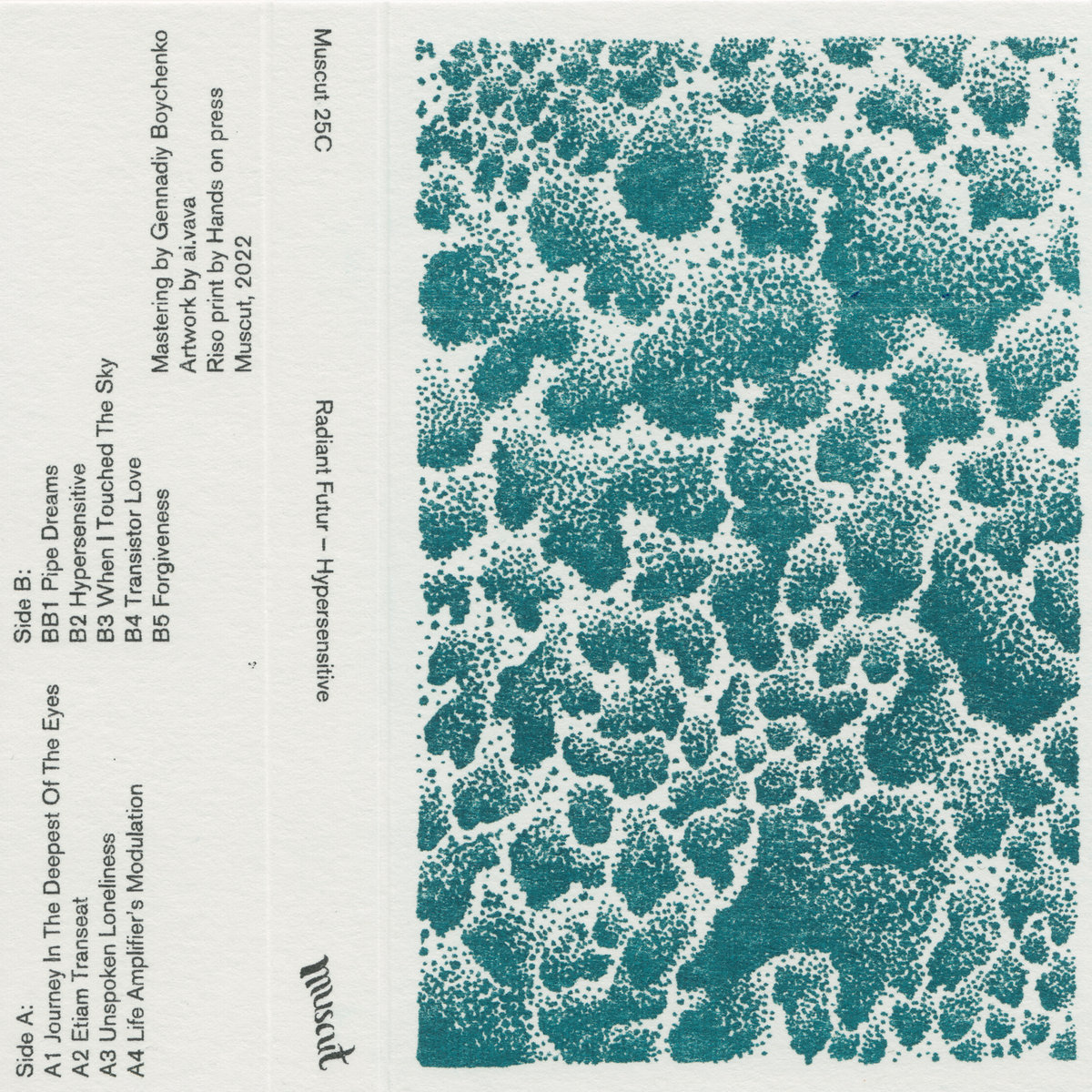 radiant futur
radiant futur
Hypersensitive
(Muscut)
Kyiv artist Ian Yeriomenko has long been a fixture of the city’s electronic music scene, offering spectral ambience and glistening new age tones for anyone with a passing interest. For his latest collection under the Radiant Futur moniker, Hypersensitive, he’s gathered together a series of aural snapshots and fictional soundtrack works which highlight his talent in evoking large expanses filled with aqueous textures and gauzy rhythmic echoes. But rather than leaving vague impressions, these songs evoke buried memories and repressed emotions that reveal themselves in the glow of its gentle mechanisms, compiling themes of movement, memory, humanism, sci-fi technology, and how the past is in a constant state of entanglement with the present. These songs are able to burrow beneath your defenses without meeting the slightest bit of resistance – they settle down deep in your body, illuminating secrets long pushed to the back corners of our subconscious. Yeriomenko understands the intricacies of these sounds and how best to wield them when attempting to circumvent the emotional fortifications we build around ourselves. Hypersensitive is a testament to the brilliance of his imagination, and to the ways in which we attempt to make sense of the world around us.

